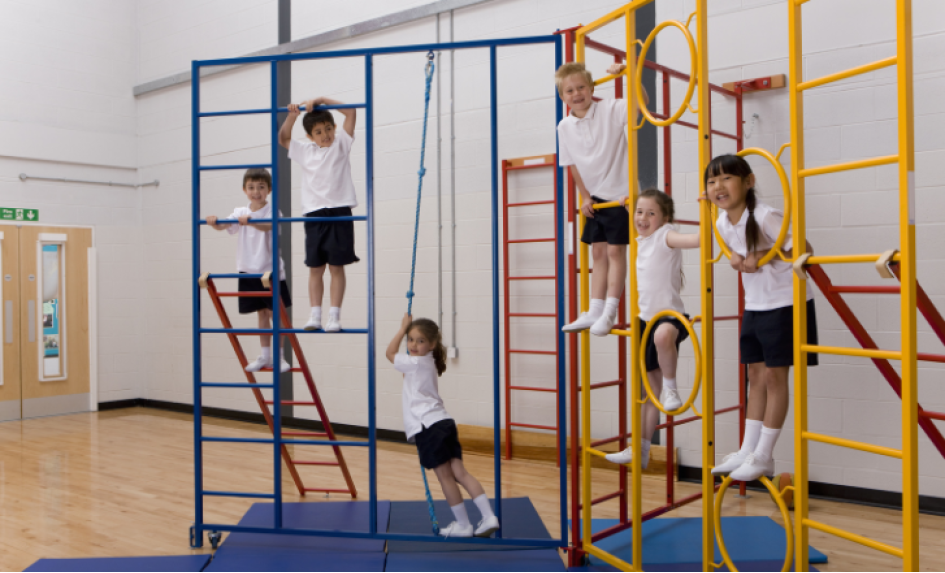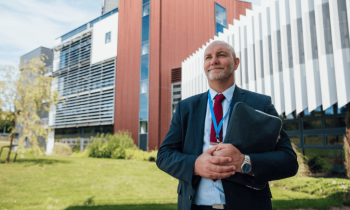The words ‘Physical Education’ (PE) might conjure up images of old-school tracksuits and laps around the school field, but the discipline is increasingly being looked to as the solution to some of our modern world problems.
With rising obesity rates and a national mental health crisis, recent statistics show that almost a third of children in England achieve less than 30 minutes of activity a day, with disadvantaged pupils most affected. Increasing exercise within the school day could be the answer to a healthier future for our young people.
At St James, we know this reality first hand. Our academy is based in a local authority that ranks in the top 3% nationally for poor health and where 38% of children leave primary school overweight or obese. To make real change, we had to take considered and large-scale action to help support our young people and provide them with the knowledge and confidence to create a healthier lifestyle. So, we set out to find how we could make PE a way of life by increasing pupil engagement and interest in exercise at school, to create a lasting impact for their future.
Setting our vision
We decided that to bring about lasting change, we needed to do more than revisit our PE curriculum. We wanted to think bigger and act bigger to influence the mindsets of our children, and in all honestly, change our own too.
After discussions as a senior leadership team, and then the wider staff, we decided to implement a multifaced, whole-school approach to PE. We believed by delivering a variety of initiatives, we could ensure we reached and engaged all of our pupils. This approach covers physical activity, PE and our outdoor education offer.
What’s a PE teacher?
A key part of our approach was redefining what it means to be a PE teacher, moving away from staff working in silos and instead integrating them into the wider school community to become school-wide consultants - helping to shape and influence our school’s attitude and involvement in physical activity.
We opted to recruit a PE lead to help us develop and then champion this vision in school and they now work with and advise our teachers on how to integrate movement into every lesson. This can vary from subtle adjustments to whole new lesson plans. For example, some of our teachers hold lessons in our outdoor classroom so pupils benefit from fresh air, nature and movement, or alternatively, they introduce a movement break halfway through lessons to allow pupils to take part in a small physical activity, providing both a physical and mental refresh in a safe space. This small act alone has seen pupils’ attention span and concentration dramatically increase, supporting their confidence and attainment.
We are also implementing more innovative solutions, introducing pupils to large-scale physical activities as part of their learning. For example, we developed an area of wasteland into a bike track and created a loose-parts play area which we use for both science and geography. These activities not only reinforce knowledge and support pupils who learn through practical application, but encourage pupils to lift, bend and stretch as they learn, increasing their dexterity.
Our PE lead has also played an essential role in helping onboard staff with this whole-school approach. Their guidance and expertise have put our teachers at ease and their enthusiasm has spread across the school. We now see excellent collaboration as our teachers try different methods and share what works best for learning and movement.
Beyond the classroom
Alongside PE in the curriculum, we have found innovative ways to introduce physicality into wider school life. This has been successful and helped us to shape our children’s mindset, understanding the importance of consistency and fun.
For example, we have introduced whole-school Friday active enrichment sessions. These include everything from archery to ju-jitsu and a climbing wall. This has also giving our children the opportunity to participate in activities to which they might not otherwise have access. They are also learning new skills, gaining the confidence to step outside their comfort zones and working as team to support each other.
In addition, we doubled our weekly PE sessions during lockdown to reduce screen and sedentary time caused by home learning. Pupils and staff received this well and it was a key part of their resilience during this challenging time. Following this success, we now deliver two sets of one-hour sessions a week, plus a commitment to Forest Schools for all pupils, targeted at those who need it.
Creating new spaces and supporting wellbeing
As part of our strategy, we also created a Forest School to help us to integrate physical activity into our pupils’ learning and intellectual curiosity, supporting them to get outside and explore nature in a hands-on way. We built our provision with Nature-Friendly Schools, a DfE and Wildlife Trusts project, which helped us create a green environment and trained our staff to deliver activities to support our children’s mental health and wellbeing.
We also welcomed our wellbeing dog, Jasper, to school. Jasper has provided a great source of emotional comfort and physical encouragement to our pupils. They can take him for walks around the school grounds and children who are struggling can spend time with him. Jasper is in school three days a week and supports the children in and out of class through individual time, time in class and his regular lunchtime play sessions.
Throughout the pandemic, we held Wednesday wellbeing sessions to support our pupils’ emotional health and wellbeing. On these days we provided ideas which were non-screen based and could be done outside and with the family.
What we learnt
Our whole-school approach has significantly supported our pupils’ physical and mental health. They are healthier, happier and more engaged in learning and making more informed choices with diet and exercise. Their confidence is improving, reflected in their attainment. Our last cohort of Year 6 pupils achieved the best ever set of informal SATs results, with reading results close to the top 5% in the country in 2021.
Benefits also extend to our teachers who are enjoying a more dynamic curriculum, and our parents report that children are more aware of their diet and the benefits of being physically active.
In recognition of our work, our recent Ofsted report stated, “Physical education is a real strength of the school. Leaders have planned a curriculum that gives pupils an excellent experience of sport and physical activity… complemented by an extensive range of extra-curricular activities”. We are a PE Centre of Excellence, a Pioneer School for our outdoor education and our Early Years programme is used as a framework for other schools under the Creating Active Schools (CAS) scheme.
We learnt a lot along the way, including the value of building in quick-wins, such as children coming to school in their PE kit. However, we also realised that our youngest pupils needed to practise changing to develop fine motor skills. We are still exploring strategies to keep every lesson as active as possible, as we learned that broadening the range of activities helps to keep motivation and engagement high.
Key insights
1. A broader educational experience for pupils
2. More engaged and excited teachers and pupils who are more ready and eager to learn
3. Increased physical fitness across the school
4. Happier and healthier children
Chris Tolson is headteacher of The Academy of St James, part of Bradford Diocesan Academies Trust










